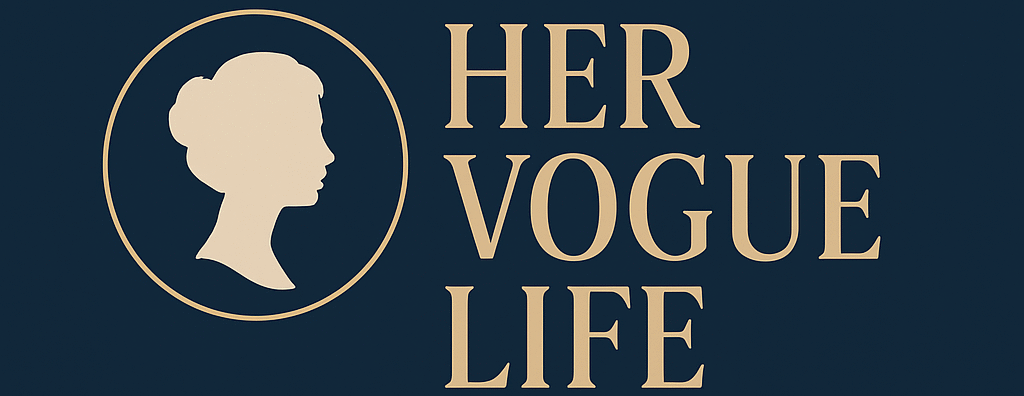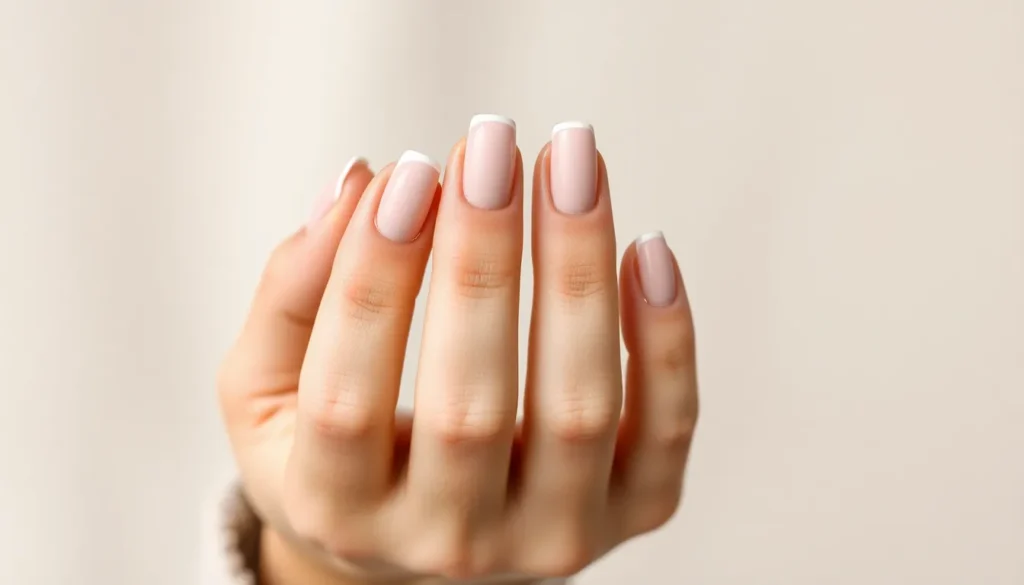Your hands tell a story and the right nail shape can make all the difference in how that story unfolds. We’ve all stood in nail salons feeling overwhelmed by shape options wondering which one will actually flatter our unique hand structure. The truth is there’s no one-size-fits-all approach to nail shapes.
Finding your perfect nail shape isn’t just about following trends – it’s about understanding your finger length nail bed width and personal lifestyle. Whether you’ve got short stubby fingers long elegant digits or something in between we’re here to help you discover which shape will make your hands look their absolute best.
The right nail shape can create the illusion of longer fingers make your hands appear more slender and even complement your personal style. We’ll walk you through each popular nail shape and reveal exactly which hand types they flatter most so you can finally say goodbye to nail shape guesswork.
Understanding Your Hand Shape and Size
Before we jump into exact nail shapes, we need to understand the foundation that determines which styles will work best for you. Your hand’s natural proportions play a crucial role in choosing the most flattering nail shape.
Identifying Your Hand Type
Wide hands with shorter fingers benefit from nail shapes that create vertical lines and elongate the appearance of your digits. Square or coffin shapes work exceptionally well because they add length without overwhelming your natural proportions.
Narrow hands with long, slender fingers can handle bold nail shapes like stiletto or almond without looking disproportionate. These hand types have the advantage of being able to pull off dramatic shapes that might overpower wider hands.
Short fingers appear longer with oval or almond nail shapes that extend beyond your fingertips. These shapes create the illusion of added length while maintaining a natural, elegant appearance that complements your hand structure.
Long fingers look balanced with square or squoval shapes that don’t add unnecessary length. These shapes help create proportion by adding width rather than extending your already lengthy digits.
Measuring Your Fingers and Palm Proportions
Finger length measurement starts by placing your hand flat on a surface and measuring from your knuckle to your fingertip. Write down these measurements for your index, middle, ring, and pinky fingers to identify which shapes will complement each digit.
Palm width assessment involves measuring across your palm at its widest point, typically just below your fingers. This measurement helps determine whether you have wide or narrow hands, which directly influences your ideal nail shape choices.
Nail bed evaluation requires examining the width of your natural nail bed compared to your fingertip width. Wider nail beds can support broader shapes like square or coffin, while narrower beds look best with oval or almond shapes.
Proportion ratios become clear when you compare your finger length to your palm width. Fingers that are longer than your palm width suit dramatic shapes, while shorter fingers relative to palm width need elongating shapes like oval or stiletto.
Square Nails: Perfect for Wide Nail Beds
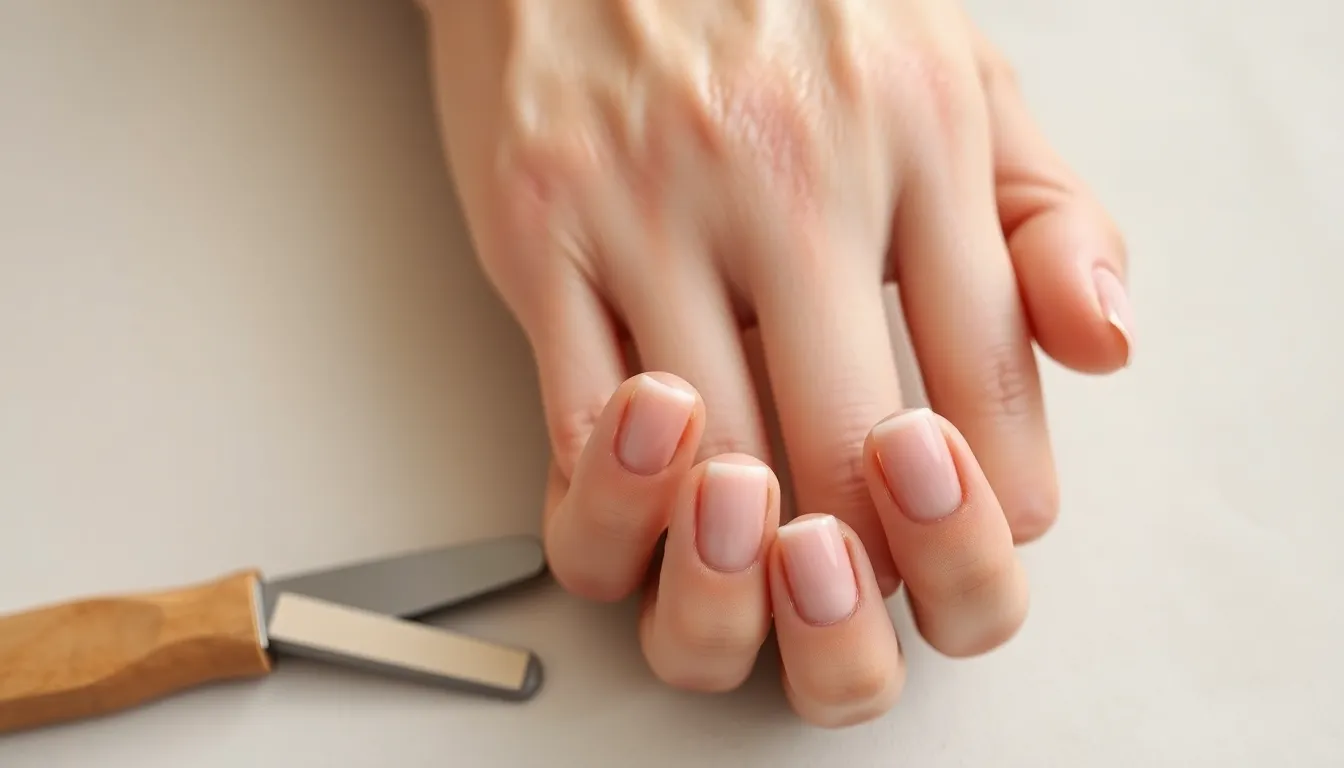
Square nails offer a classic, sophisticated look that works exceptionally well for exact hand types. This timeless shape features straight edges with sharp corners that create clean lines and enhance the natural strength of your nails.
Best Hand Types for Square Nails
Long fingers benefit most from square nails because the horizontal lines create visual balance against elongated digits. We recommend this shape for anyone whose fingers appear disproportionately long compared to their palm width.
Slender fingers gain definition and presence with square nails, as the straight edges add width that complements narrow finger shapes. The sharp corners prevent delicate fingers from appearing too fragile or wispy.
Wide nail beds pair perfectly with square shapes because the straight filing technique maximizes the nail bed’s natural width. Strong nails can handle the structural demands of maintaining sharp corners without breaking or chipping easily.
Balanced proportions emerge when you have both long fingers and wide nail beds, making square nails an ideal choice for creating harmonious hand aesthetics.
How to Achieve the Perfect Square Shape
Preparation begins with ensuring your natural nails extend at least 2-3 millimeters beyond your fingertip. Short nails cannot support the square shape effectively and may appear stubby.
Filing technique requires using a high-quality nail file to create perfectly straight sides. We suggest filing from the outer edge toward the center in smooth, even strokes rather than using a back-and-forth sawing motion.
Edge creation involves filing the tip completely horizontal to form a straight line across the nail’s width. Check your progress frequently to ensure both sides remain symmetrical and the corners stay sharp.
Finishing touches include smoothing any rough edges with a fine-grit buffer while maintaining the square’s distinctive sharp corners. Polish application should emphasize the clean lines you’ve created through proper filing technique.
Round Nails: The Universal Flattering Choice
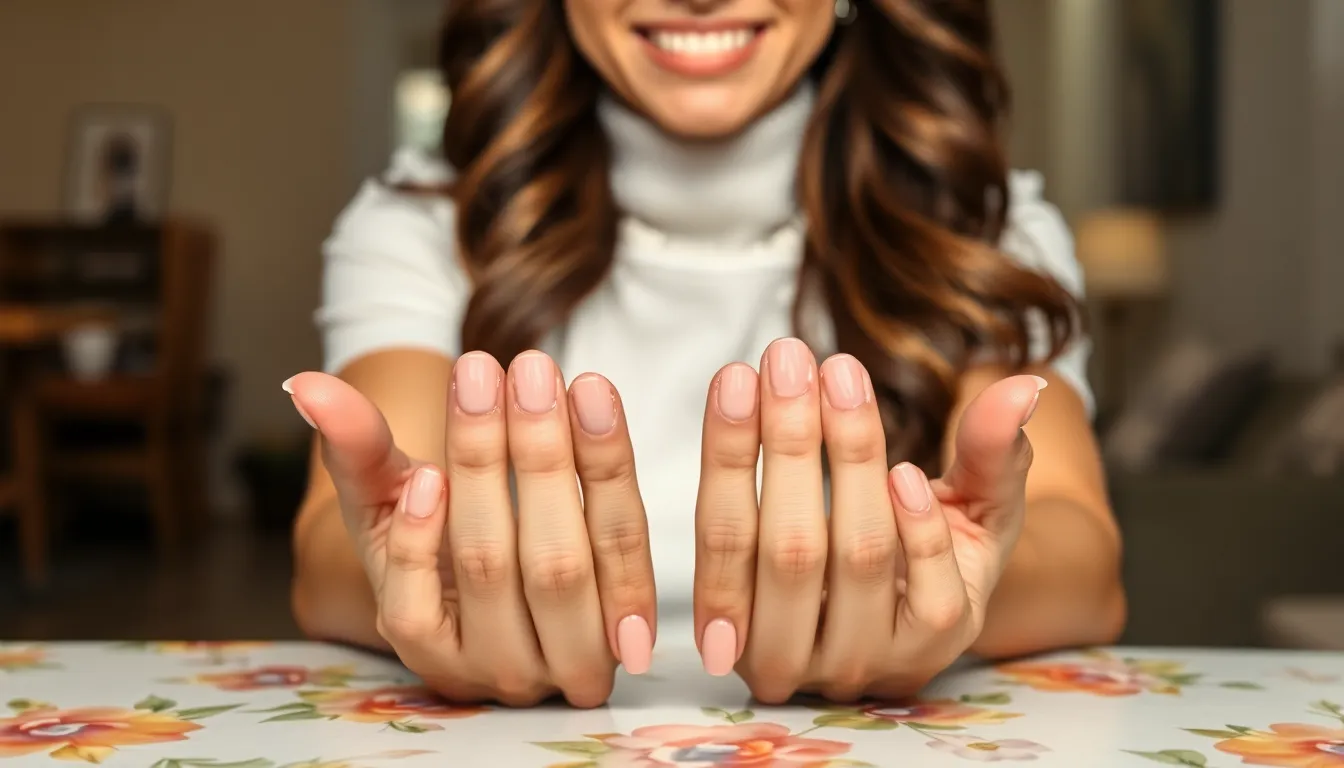
Round nails stand out as the most accommodating shape for virtually any hand type. They’re the perfect starting point for anyone uncertain about which nail shape will work best for them.
Why Round Nails Work for Most Hand Types
Adaptability makes round nails our top recommendation for beginners and nail enthusiasts alike. They complement shorter nails beautifully while providing that polished, professional appearance that works in any setting. Maintenance becomes effortless with round nails since they’re naturally resistant to chipping and breaking compared to more angular shapes.
Versatility shines through when you consider how round nails pair with every nail design imaginable. From minimalist nude tones to elaborate nail art, this classic shape serves as the perfect canvas. Finger enhancement occurs naturally as round nails create a subtle elongating effect, making fingers appear more slender without being overly dramatic.
Practicality wins over busy lifestyles since round nails don’t catch on clothing or interfere with daily activities. They’re particularly suitable for those who work with their hands frequently or prefer a more understated nail look.
Creating the Ideal Rounded Edge
Preparation starts with clean, trimmed nails that match your desired length. We recommend keeping round nails at a moderate length to maintain their classic proportions and prevent breakage.
Filing technique requires following your fingertip’s natural curve to achieve that perfect rounded shape. Start by filing from the outer edges toward the center, creating smooth, even curves that mirror your fingertip’s contour.
Edge refinement involves gentle buffing to eliminate any rough spots or uneven areas along the nail’s perimeter. This step ensures your round nails feel smooth and look professionally finished.
Final touches include applying a base coat, your chosen polish color, and a protective top coat to enhance the rounded shape’s natural beauty and extend your manicure’s lifespan.
Oval Nails: Elongating Short Fingers
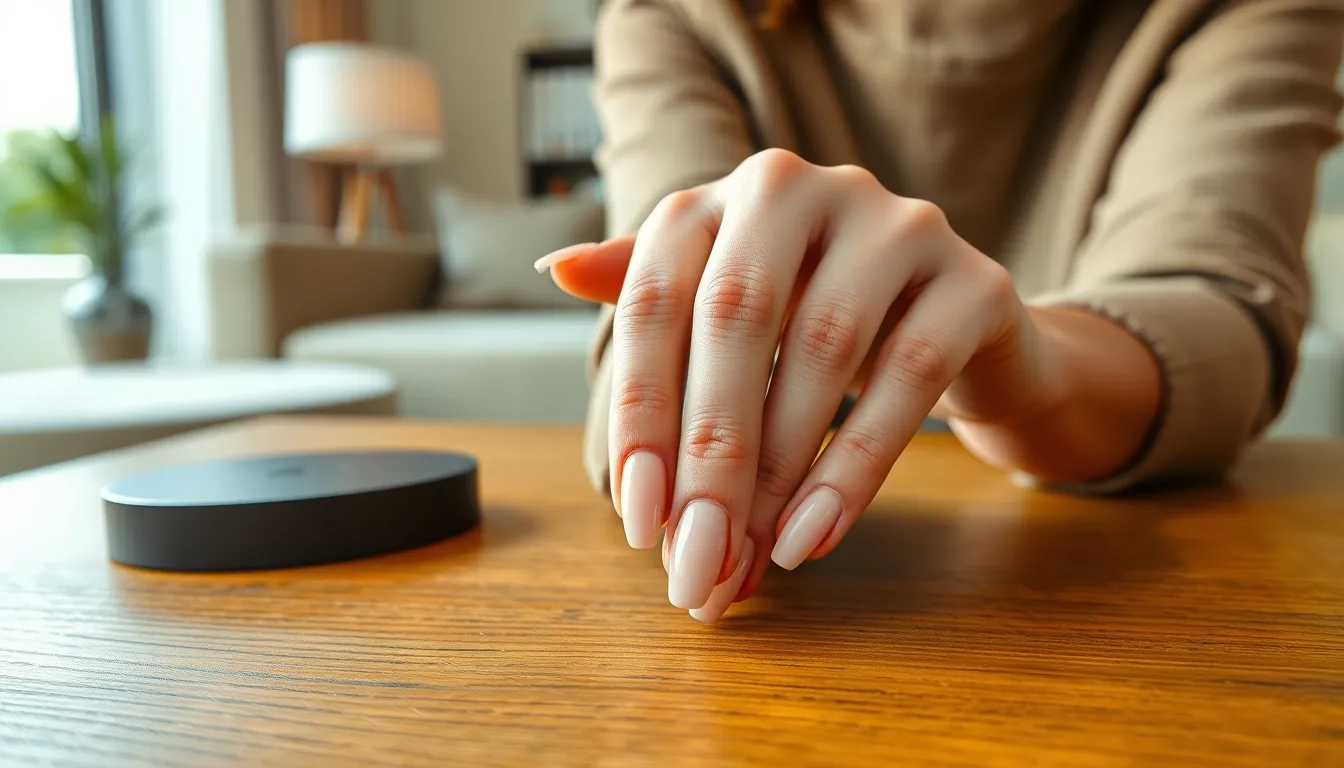
Oval nails offer the perfect balance between elegance and practicality, making them one of our most recommended shapes for creating length. Their smooth, rounded edges taper slightly toward the tip, visually extending shorter fingers while maintaining a natural appearance.
Benefits of Oval Shape for Different Hand Types
Short or Wide Nail Beds receive the most dramatic transformation from oval shaping. This versatile style creates the illusion of longer, more slender fingers by drawing the eye upward along the nail’s curved silhouette. We’ve found that oval nails make hands appear more elegant and refined, particularly for individuals struggling with wider nail beds that can look stubby in other shapes.
Active Lifestyle Enthusiasts appreciate oval nails for their durability and low maintenance requirements. The rounded edges minimize chipping and breakage risks, making them ideal for hands-on jobs or busy routines. Unlike sharp-edged shapes that snag easily, oval nails withstand daily wear while maintaining their polished appearance.
Versatile Style Options make oval nails suitable for both casual and formal settings. Their timeless aesthetic transitions effortlessly from workplace meetings to evening events, offering a sophisticated look that never goes out of style. We recommend this shape for anyone wanting a universally flattering option that works with any nail length.
Shaping Techniques for Natural-Looking Ovals
Start by filing from the sides at a slight angle toward the center, following your fingertip’s natural curvature. Begin with a medium-grit file and work in one direction to prevent splitting and weakening of the nail structure.
Create the free edge by gently rounding the tip into a smooth, symmetrical arc. Avoid creating sharp corners or points, as these detract from the elongating effect we’re trying to achieve. The goal is a seamless curve that appears to be a natural extension of your finger.
Check for symmetry regularly by examining both hands from different angles throughout the filing process. Hold your hands at eye level and compare each nail’s shape to ensure consistency across all ten fingers. This attention to detail creates a professional, polished appearance that enhances the overall elongating effect.
Finish with a fine-grit buffer to smooth any rough edges and create the perfect oval silhouette. This final step ensures your nails feel as smooth as they look, preventing snags that could compromise the shape’s longevity.
Almond Nails: Adding Elegance to Any Hand
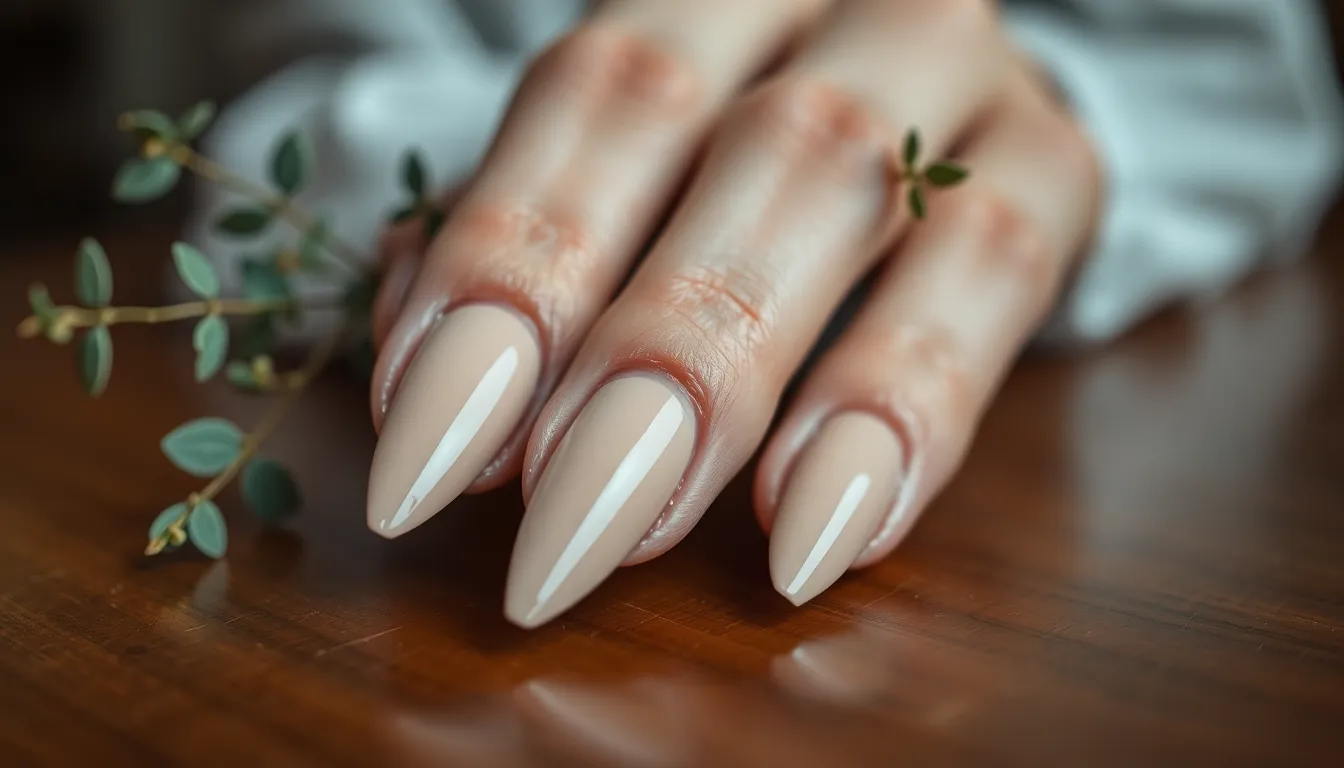
Almond shaped nails create a sophisticated silhouette that makes fingers appear longer and more slender. We consider this timeless shape one of the most elegant options available, featuring tapered sides that converge into a slightly rounded tip reminiscent of an actual almond.
Best Candidates for Almond-Shaped Nails
Medium to long nail beds work best for achieving the classic almond shape, as this length allows the tapered effect to be both visible and structurally sound. Strong, healthy nails are essential since the pointed nature of almond nails requires durability to prevent breakage and maintain their elegant appearance.
Those with shorter nails or brittle nail conditions may struggle to maintain this sophisticated shape effectively. We recommend waiting until your nails grow to adequate length before attempting the almond style, as insufficient length prevents the characteristic tapering from developing properly.
Perfect candidates include individuals seeking to create an illusion of elongated fingers or add a subtle yet refined statement to their overall look. Older hands particularly benefit from almond nails, as this shape helps visually lengthen and slim the fingers for a more youthful appearance.
Fashion conscious individuals often choose almond nails for their versatility and chic appeal, making them suitable for both professional settings and special occasions. Celebrity endorsement has made this shape increasingly popular among those wanting a feminine, elongating effect that complements various hand types.
Maintenance Tips for Almond Nails
Regular filing forms the foundation of proper almond nail maintenance, requiring consistent attention to preserve the elegant tapered shape. Start by filing the sides of your nails diagonally toward the tip, gradually creating the characteristic soft point that defines this sophisticated style.
Avoid filing too aggressively, as excessive removal can weaken the nail structure and lead to unwanted breakage. We recommend using gentle, controlled strokes when shaping to maintain the integrity of your nails while achieving the desired almond silhouette.
Finish the filing process by gently rounding out the top edge for a smooth, classic appearance that eliminates sharp points. This final step ensures your almond nails look polished and professional while reducing the risk of snagging or catching on fabrics.
Consistent moisturizing helps maintain nail health and prevents the brittleness that can compromise the almond shape over time. Focus on protecting the nail edges with cuticle oil or hand cream to keep them strong and flexible.
Professional touch ups every two to three weeks help maintain the precise almond shape as your nails grow. We suggest scheduling regular appointments with a nail technician who understands the exact requirements of this elegant nail style.
Coffin Nails: Bold Statement for Long Fingers
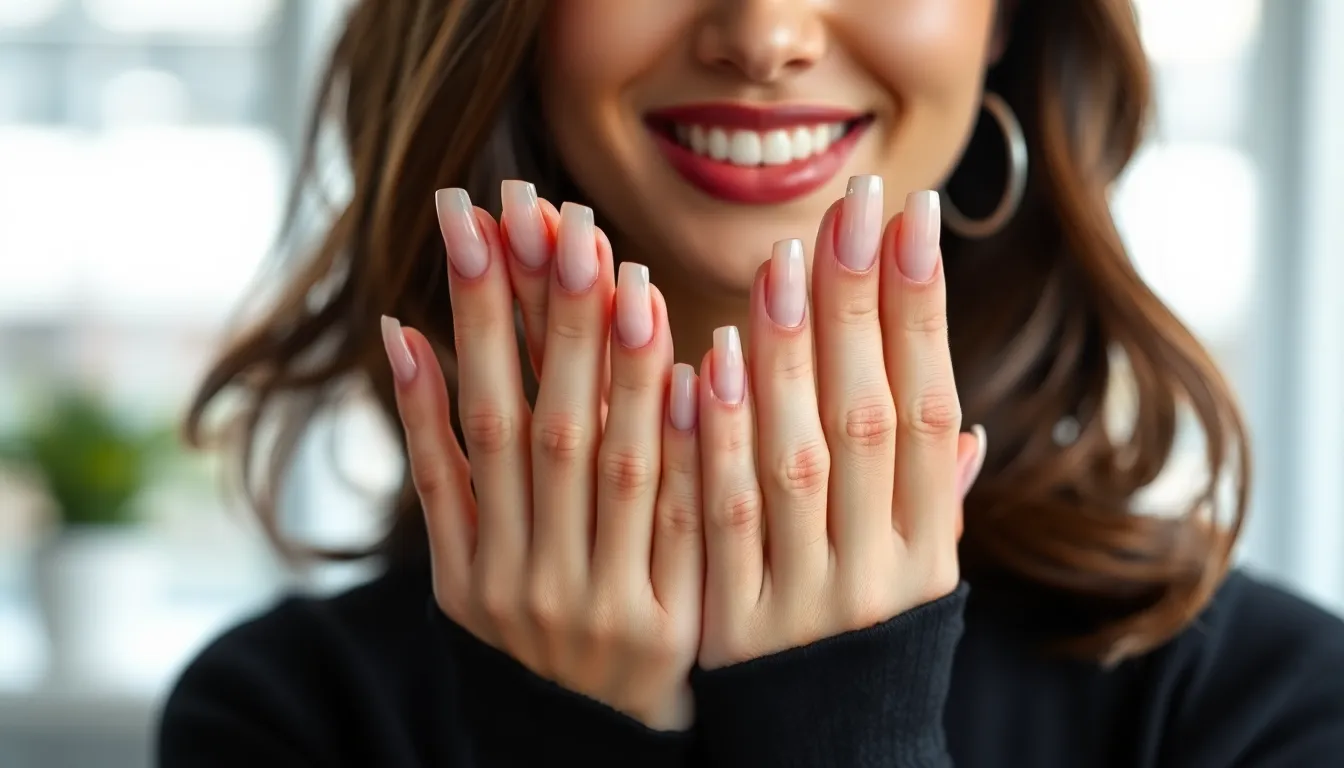
Coffin nails make a dramatic impression with their distinctive tapered silhouette and flat tip design. This edgy shape demands attention while creating an ultra-modern aesthetic that’s perfect for making a fashion statement.
When Coffin Shape Works Best
Long fingers benefit most from coffin nails because the dramatic shape adds visual interest without shortening the appearance of your digits. Your naturally elongated fingers provide the perfect canvas for this bold design choice.
Strong, healthy nails are essential for maintaining the coffin shape since the structure requires more nail strength than rounded alternatives. We recommend ensuring your nails are in excellent condition before committing to this striking style.
Medium to long nail lengths work best for achieving the authentic coffin silhouette, as shorter nails can’t accommodate the necessary tapering and flat tip design. Your nails should extend at least half an inch beyond your fingertip for optimal results.
Bold personality types gravitate toward coffin nails because this shape isn’t subtle or understated. If you love making fashion statements and aren’t afraid to stand out, coffin nails align perfectly with your aesthetic preferences.
Achieving the Perfect Coffin Silhouette
Start with properly prepared nails by pushing back cuticles and ensuring your nail surface is clean and smooth. File your nails to achieve the basic length needed before beginning the coffin shaping process.
Create the tapered sides by filing from the outer corners toward the center, gradually narrowing the nail as you approach the tip. Maintain symmetry by checking both sides frequently during this crucial shaping phase.
Form the flat tip by filing straight across the narrow end of your tapered nail, creating the signature coffin appearance. This flat edge should be perfectly horizontal and proportional to your nail width.
Smooth all edges thoroughly using progressively finer grits to eliminate any rough spots or imperfections. Buffer the entire nail surface to ensure a professional finish that’s ready for your chosen polish or nail art.
Maintain the shape regularly through careful filing every 7 to 10 days, as coffin nails are more prone to chipping and breaking than other shapes. Schedule professional touch ups every two to three weeks to preserve the dramatic silhouette and prevent structural damage.
Stiletto Nails: Dramatic Length for Special Occasions

Stiletto nails create a dramatic, high-fashion look with their long, pointed tips that make a bold statement. This edgy style is perfect for special occasions when you want to showcase a striking, fashion-forward appearance.
Hand Types That Can Pull Off Stiletto Nails
Long fingers are the ideal canvas for stiletto nails, as the extended length enhances the overall elegance of your hands. Individuals with longer fingers can effortlessly pull off this dramatic style because the nail length complements their natural proportions.
Narrow nail beds benefit significantly from stiletto nails, as this shape creates a balanced and visually appealing look. The pointed design helps elongate the appearance of narrower nail beds while maintaining proportional harmony.
Strong natural nails are essential for maintaining stiletto nails, as this shape requires durability to withstand the length and pressure. Those with robust nail strength can successfully wear stilettos without experiencing frequent breakage or damage.
But, certain hand types may find stiletto nails challenging:
- Short fingers might not achieve the most flattering results with stiletto nails, though individual preferences vary
- Brittle or weak nails struggle to maintain the dramatic length required for this style
- Wide nail beds may not achieve the desired visual balance with stiletto shapes
Professional vs. DIY Stiletto Application
Professional application is strongly recommended for stiletto nails, especially when using acrylics to achieve the desired length and durability. Nail technicians possess the expertise to create secure, well-finished applications that avoid common issues like lifting or uneven surfaces.
Experienced professionals can ensure proper nail preparation, precise shaping, and optimal product application for long-lasting results. They also provide guidance on maintenance schedules and aftercare to preserve the dramatic stiletto appearance.
DIY application requires exceptional patience, skill, and careful planning to achieve smooth, even results. This approach can be risky for beginners, as improper technique may lead to imperfections, weak points, or premature nail failure.
Home application challenges include achieving symmetrical points, maintaining consistent length across all nails, and creating durable bonds that withstand daily activities. We recommend practicing on shorter lengths before attempting full stiletto nails at home.
Squoval Nails: The Best of Both Worlds

Squoval nails bridge the gap between classic square and elegant oval shapes, offering the ideal compromise for those who can’t choose between the two styles.
Combining Square and Oval for Versatility
Squoval nails provide the balance of square nails’ straight edges and oval nails’ rounded tips, making them versatile for various hand types. This hybrid shape delivers the structural strength we love about square nails while incorporating the softness that makes oval shapes so appealing.
Versatility becomes the defining characteristic when we examine how squoval nails complement different finger lengths and nail bed widths. Wide nail beds benefit from the straight sidewalls that maximize their natural width, while narrow beds gain definition from the gentle curves at the tip.
Hand types that struggled with purely square or oval shapes often find their perfect match in the squoval design. Short fingers appear longer thanks to the vertical lines created by the straight sides, while long fingers maintain balance through the rounded tip that prevents excessive elongation.
Professional settings welcome squoval nails because they strike the perfect balance between conservative and stylish. We can transition seamlessly from boardroom meetings to evening events without worrying about our nail shape appearing too bold or too understated.
Perfect Balance for Medium-Length Nails
Medium length nails showcase squoval shapes most effectively, offering a balanced look that is both stylish and practical. This length provides enough surface area to appreciate the shape’s unique characteristics without requiring the maintenance demands of longer styles.
Practical benefits emerge when we consider daily activities with medium length squoval nails. They’re long enough to feel elegant yet short enough to type comfortably, making them ideal for professionals who need both style and functionality.
Nail strength improves significantly at medium lengths compared to longer alternatives like stiletto or coffin shapes. We experience fewer breaks and chips because the squoval design distributes stress evenly across the nail surface.
Maintenance requirements remain manageable when we keep squoval nails at medium length. Weekly filing sessions help preserve the shape’s clean lines, while regular cuticle care and nail strengthener applications prevent breakage and maintain the polished appearance we desire.
Factors to Consider When Choosing Your Nail Shape

Selecting the right nail shape involves more than just personal preference. We need to evaluate several practical aspects that’ll affect how well our chosen shape works in real life.
Lifestyle and Practical Considerations
Daily activities significantly impact which nail shapes work best for our routines. Those of us who engage in hands-on activities like gardening, cooking, or playing sports benefit from shorter, rounded shapes like oval or squoval that resist breakage. Pointed styles such as stiletto or coffin nails can interfere with manual tasks and are prone to breaking during everyday activities.
Maintenance requirements vary dramatically between different nail shapes. Oval and squoval shapes require minimal upkeep and naturally maintain their form as nails grow, making them ideal for busy lifestyles. Square and stiletto shapes demand more frequent filing and professional touch-ups to preserve their precise edges and points.
Active lifestyles call for durable nail shapes that can withstand wear and tear. Round and oval nails naturally distribute stress across the nail, reducing the likelihood of chips and breaks. Sharp-edged shapes like square nails or dramatic points require stronger natural nails to maintain their structure during physical activities.
Professional Requirements and Daily Activities
Workplace demands often dictate which nail shapes are most practical for our careers. Those of us who type frequently find that shorter, rounded shapes like oval or squoval allow for comfortable keyboard use without clicking or catching on keys. Long pointed nails can significantly slow typing speed and accuracy.
Manual dexterity requirements in certain professions limit our nail shape options. Healthcare workers, chefs, and artists need nails that won’t interfere with precise hand movements or create hygiene concerns. Shorter oval or round shapes provide the best balance of style and functionality for these demanding roles.
Professional appearance standards may influence our nail shape choices. Conservative work environments often favor classic shapes like oval, round, or squoval that maintain a polished look without drawing excessive attention. Creative industries typically offer more flexibility for dramatic shapes like coffin or stiletto nails.
Client-facing positions require nail shapes that complement our professional image. We should consider how our chosen shape affects handshakes, document handling, and overall presentation during business interactions.
Common Mistakes to Avoid When Shaping Nails

Even with the best intentions, we can make critical errors that compromise both our nail health and aesthetic results. Understanding these common pitfalls helps us maintain strong, beautiful nails that complement our hands perfectly.
Over-Filing and Damage Prevention
Excessive filing ranks as the most damaging mistake we make when shaping our nails. This aggressive approach weakens the nail structure and creates microscopic tears that lead to painful breaks and splits. We often become overzealous with our filing, especially when trying to achieve dramatic shapes like stiletto or coffin styles that require important nail removal.
Filing in a back-and-forth sawing motion destroys the nail’s natural strength. This technique creates friction that generates heat and causes the nail layers to separate. Instead, we should file in one direction from the outer edge toward the center, using smooth, controlled strokes that preserve the nail’s integrity.
Using coarse files on natural nails causes unnecessary trauma to the nail plate. Rough grits remove too much material too quickly, making it impossible to control the shaping process. We recommend choosing fine-grit files (240 grit or higher) for natural nails, reserving coarser options only for artificial extensions.
Frequent filing sessions compound the damage and prevent proper nail growth. Our nails need time to recover between shaping sessions, typically requiring 1-2 weeks for the nail plate to strengthen. Scheduling filing sessions too close together creates a cycle of weakness that makes maintaining any shape increasingly difficult.
Choosing Shapes That Don’t Suit Your Hands
Selecting nail shapes without considering our finger proportions creates unflattering results that emphasize our hands’ less favorable features. Wide fingers appear even broader when paired with square nails, while short fingers look stumpy with round or square shapes that don’t create vertical lines. We must assess our finger length, palm width, and nail bed proportions before committing to any particular style.
Ignoring our lifestyle demands leads to constant frustration with impractical nail shapes. Stiletto and coffin nails require extensive maintenance and break easily during hands-on activities, making them unsuitable for active lifestyles. We should choose shapes that align with our daily routines, selecting durable options like oval or squoval for busy schedules.
Following trends without considering our nail strength results in constant breakage and disappointment. Dramatic shapes like almond and stiletto require strong, healthy nails to maintain their structure, yet we often attempt these styles on weak or damaged nails. Brittle nails benefit from shorter, rounder shapes that don’t stress the nail plate at vulnerable points.
Overlooking our nail bed width creates disproportionate results that look unnatural. Narrow nail beds struggle to support wide shapes like square or coffin styles, while wide nail beds appear overwhelming with pointed shapes like stiletto. We achieve the most flattering results when we choose shapes that complement our natural nail bed proportions rather than fighting against them.
Conclusion
Your perfect nail shape is waiting to be discovered – it’s all about understanding what works best for your unique hands and lifestyle. We’ve explored how finger length nail bed width and daily activities all play crucial roles in making the right choice.
Remember that the most flattering nail shape isn’t always the trendiest one. Whether you choose classic round nails for their versatility or bold stiletto shapes for special occasions the key is selecting what enhances your natural beauty while fitting seamlessly into your routine.
Take time to assess your hand proportions and consider your maintenance preferences. With the right shape your nails will become a confident extension of your personal style that you’ll love showing off every day.
Frequently Asked Questions
What factors should I consider when choosing a nail shape?
Consider your finger length, nail bed width, lifestyle, and daily activities. Long fingers suit square or squoval shapes, while short fingers look better with oval or almond shapes. Wide nail beds work well with square or coffin styles, and narrow beds complement stiletto or almond shapes. Also factor in maintenance requirements and professional dress codes.
Which nail shape is best for short fingers?
Oval and almond shapes are ideal for short fingers as they create the illusion of length and elongate the appearance of your hands. These shapes draw the eye upward, making fingers appear longer and more slender while maintaining a natural, elegant look.
Are square nails suitable for all hand types?
No, square nails work best on long fingers and wide nail beds. The horizontal lines of square nails create visual balance for longer fingers and maximize the natural width of wide nail beds. They may not be flattering on short or narrow fingers.
What’s the difference between oval and round nail shapes?
Round nails follow the natural curve of your fingertip with a more circular shape, while oval nails are more elongated and tapered. Round nails are shorter and more practical, while oval nails create more length and are better for elongating short fingers.
How often should I reshape my nails?
Most nail shapes require reshaping every 2-3 weeks, depending on growth rate and lifestyle. Dramatic shapes like stiletto and coffin may need professional touch-ups more frequently, while low-maintenance shapes like round and oval can go longer between appointments.
Can I achieve coffin nails on short nails?
Coffin nails require medium to long nail length to achieve the proper tapered silhouette and flat tip. Short nails don’t provide enough length to create the distinctive coffin shape effectively. Consider growing your nails out or using extensions first.
What nail shape requires the least maintenance?
Round and oval shapes require the least maintenance due to their natural curves and resistance to chipping. They follow your nail’s natural growth pattern and don’t require frequent filing to maintain their shape, making them ideal for busy lifestyles.
Are stiletto nails practical for everyday wear?
Stiletto nails are primarily fashion-forward and not practical for everyday activities involving hands-on work. They’re best reserved for special occasions due to their fragility and tendency to break. Consider your lifestyle before choosing this dramatic shape.
What’s a squoval nail shape?
Squoval nails combine square and oval elements, featuring straight sides like square nails with rounded corners like oval nails. This hybrid shape offers the structural strength of square nails while providing the softness and versatility of oval shapes.
How do I know if my nail beds are wide or narrow?
Compare your nail bed width to your finger width. Wide nail beds extend across most of the fingertip, while narrow nail beds appear smaller in proportion to the finger. Wide beds suit square or coffin shapes, while narrow beds work well with almond or stiletto styles.
